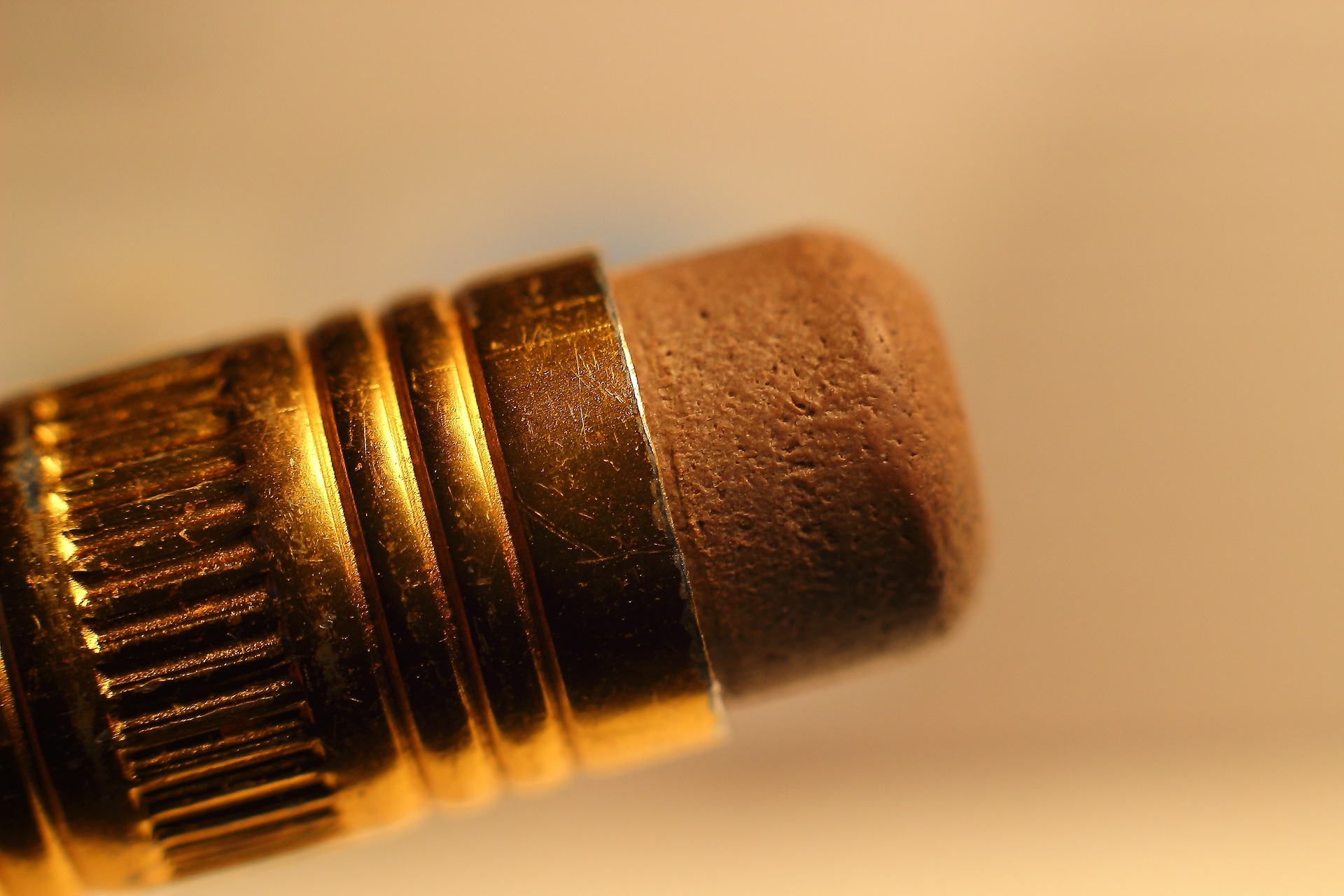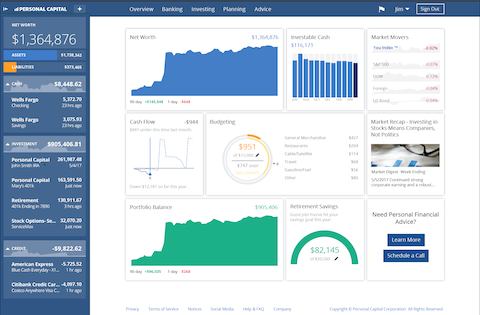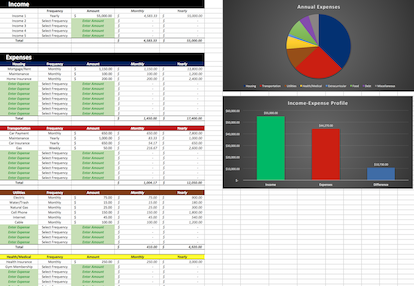
Debt. It gives us spending flexibility by providing the resources to purchase big-ticket items we’d otherwise be unable to afford. It allows us to delay payment on purchases and to spread the total amount owed into smaller sums, paid overtime. The process for accessing debt can be as easy as filling out a short application online than receiving a credit card in the mail a few days later. With a good credit score, utilizing debt can also be very inexpensive. Under certain circumstances, it’s possible to obtain extremely low—and sometimes even 0%—interest rates. Overall, when used responsibly, debt can be a powerful financial tool.
It all sounds like such a great deal!
And, in theory, it is…
The reality of debt isn’t always so bright, however. High-interest rates, predatory lending, and unfair terms often eclipse any benefits debt might provide. In extreme cases, debt can even force you into declaring bankruptcy. Once you are deep in debt, getting out can seem like an impossible task, especially for those with low incomes.
So what’s the solution? Is there a way to get out of debt quickly and easily with minimal effort? The short answer is, no. Getting out of debt takes work. It will require you to be disciplined and consistent. It may also require you to make some financial sacrifices. There is no easy way out of debt.
There are techniques and strategies to make the whole process a bit smoother and cheaper, however. I step through my preferred methods below.
Before You Begin
There are two things that should take priority over paying off debt. The first is, accumulating $1,000 in a savings account. If you don’t have at least $1,000 saved, you should postpone implementing any new debt elimination strategies. Before starting on your debt, you need to have enough money saved to deal with a sudden emergency if one were to pop up. Focus on saving at least $1,000 in a high-yield savings account before even thinking about attacking your debt.
The second thing you should do before paying off debt is to contribute enough to your 401(k) to get the maximum employer match. 401(k)s are one of the best investments available. It doesn’t make sense to pass up on the opportunity to invest in one when your employer is willing to pay you to do so. Once you have $1,000 saved, transition your focus to contributing enough to your 401(k) to get the maximum employer match. If your employer doesn't do any matching you can skip this step.
Once you’ve checked both these items off of your list, debt elimination is the next step.
Organize Your Debts
In order to pay off your debt, you must determine exactly how much you owe and whom you owe it to. Gather the paperwork for each debt and organize the following information into a table: debt name, total amount owed, minimum required monthly payment, interest rate, and creditor’s phone number. This document now contains all the information you need to pay off your debt. Keep it handy so you can reference it throughout the process.
Always Negotiate
One aspect of being in debt that many are unaware of is the ability to negotiate with the creditors. Creditors are willing to negotiate payment due dates, interest rates, payment amounts, and sometimes even the total balance owed. It’s even possible to have some debts—usually medical bills or student loans—forgiven in full (typically this is available to those with lower incomes). To begin the negotiation process, simply call your creditor directly. Start with the accounts you’ve held for the longest. These creditors will be more likely to negotiate with you since you have a more extensive history as a loyal customer. Once you have them on the phone, politely explain your situation and ask them to accommodate you. Be sure to be as specific as possible in what you are requesting. Ideally, you’ll be able to have all or a portion of your debt forgiven. This probably won’t happen for most debts but, minimally, you should ask each creditor you speak with, to lower your interest rate. Here are some examples of things you might say:
“I’ve been a loyal customer for the last 10 years and I’d like that relationship to continue. I feel the interest rate on my credit card has gotten too high. Whom can I speak to about lowering it from 20% to 10%?”
“I was recently laid off from my job and can now only afford to pay about $50 per month towards my loan. Can we discuss lowering the minimum monthly payment from $100 to $50?”
“<Explain situation> Are there any loan forgiveness programs for someone in my situation?”
“I receive my paycheck on the 1st of each month. I’d like to change my payment due date to the 1st as well. Can you help me with that?”
“I’ve received credit card offers in the mail with much lower interest rates than my current one. I’d like to discuss lowering my rate to a more competitive 12%.”
Note: Always speak honestly when negotiating. Lying about hardships to avoid paying creditors could potentially backfire.
After contacting each of your creditors, you’ll hopefully have negotiated favorable terms for each of your debts. If not, don’t fret; you will soon be erasing all your debt for good!
Debt Avalanche
As mentioned above, you should already be contributing enough to your 401(k) to receive the maximum match from your employer. All additional funds you have in excess of this amount—after paying required bills—should now be allocated to paying off debt. Take a look at your budget and decide how much you can afford to pay toward your debt each month. This may require you to make some temporary spending sacrifices (e.g. less eating out, cutting cable, reducing travel, moving to a less expensive apartment, less partying/going out, selling a car, etc.), but you’ve got to stay strong! Becoming debt-free is within your reach.
To pay off your debt quickly and efficiently we are going to use a method commonly referred to as a “debt avalanche”. This method will save you both time and money as you pay off your debt. It goes as follows:
- Organize your debts in order from highest to lowest interest rate.
- Each month, pay the minimum required payment on each debt.
- Apply all additional funds to the debt with the highest interest rate.
- When a debt is paid off, add its payment to the debt with the highest interest rate.
- Continue this process until all debt is paid.
Let’s do an example.
Example
Greg has always paid only the minimum required payment on each of his debts. This strategy has left him feeling like he’ll never be out of debt. He decides to work on becoming debt-free.
Greg gathers information about each of his debts and organizes it into the table below.
Name Balance Minimum Payment Interest Rate Phone Number
Credit Card #1 $12,500 $250 20.0% XXX-XXX-XXX
Credit Card #2 $7,500 $125 17.0% XXX-XXX-XXX
Personal Loan $1,000 $25 10.0% XXX-XXX-XXX
Student Loan $10,000 $100 8.5% XXX-XXX-XXX
Car Loan $10,500 $150 6.5% XXX-XXX-XXX
Totals = $41,500 $650
Starting with his oldest account, Greg calls each of his creditors to request a lower interest rate. He is successful in lowering the rate on his two credit cards, one from 20.0% to 17.5% and the other from 17.0% to 15.0%.
Greg looks over his budget, and by cutting cable, going out less, and moving into a less expensive apartment, he finds that he can afford to allocate $850 per month to pay off debt.
Each month, Greg pays the minimum on each debt. He then applies the remaining $200 (i.e. $850 - $650) to the debt with the highest interest rate.
Month #1 Payments
Name Balance Minimum Payment Total Monthly Payment Interest Rate
Credit Card #1 $12,500 $250 $450 17.5%
Credit Card #2 $7,500 $125 $125 15.0%
Personal Loan $1,000 $25 $25 10.0%
Student Loan $10,000 $100 $100 8.5%
Car Loan $10,500 $150 $150 6.5%
Totals = $41,500 $650 $850
When Credit Card #1 is paid off, Greg will take the $450 he was paying toward it and add it to the $125 he is paying on Credit Card #2 ($575 total). Once Credit Card #2 is paid off, Greg will use the $575 he was paying toward it and add it to the payment on the debt with the next highest interest rate. Greg will continue this process until all debts are paid.
In total, it will take Greg a little over 5 years (about 64 months) and cost him $13,400 in interest to pay off the $41,500 he owes. If he had continued to pay the minimum on each debt and stuck with the original interest rates, it would have taken him 14.5 years and cost him a whopping $34,371 in interest!
By utilizing the techniques and strategies described above, Greg was able to finish paying off his debt more than nine years early and he avoided $20,971 in interest payments while doing it!
Final Thoughts
When you're deep in debt, things may seem hopeless. I wrote this post to show that your situation may not be as bad as it initially seems. With a little hard work and dedication, you may be able to turn things around much faster than you previously thought possible. Never let a setback stop your pursuit of financial independence. There’s always a solution out there to be found or created. I truly believe that when you put your mind to something, almost anything can be achieved. Now go forth and erase your debt for good!
Tools To Get You Started
Get a head start on your journey toward achieving financial independence by analyzing and tracking your income, expenses, investment performance, and overall net worth with the free online wealth management tool Empower Personal Dashboard.
We use Empower Personal Dashboard regularly to analyze our investment fees, track our investments, and project our net worth. We also periodically review our progress toward retirement with their retirement planning calculator.
If you’d rather do things on your own, become a subscriber today and you’ll receive our Free Financial Planning Dashboard. This tool allows you to enter your income and expenses to create a detailed budget. You can use it to track your spending habits over time or just to get an idea of where your money is going each month. Take a look at the automatically generated charts and you may discover you have a little more cash to invest than you thought.
If you’re interested in detailed instructions on how to budget, save, pay off debt, and invest, check out The 6 Phases of Building Wealth. This book provides step-by-step instructions for working through each “Phase” in the process of achieving Financial Freedom. If you're just starting out, the information in this book will provide you with an invaluable resource. You can pick up the digital version for only $2.99 on Amazon.
Disclosure: Some of the links found on this website may be affiliate links. Affiliate links pay GGD a small commission when you click through and/or make a purchase. This is at zero additional cost to you.
Full Disclaimer/Disclosure
Related Posts
-
Why 401(k)s Are The Best Investments, Period
There are plenty of great investment options out there to choose from, but very few can compete with the advantages of a 401(k). When you add in employer matching to the equation, I believe 401(k)s…
-
Surprisingly Simple Investment Strategy For Retiring Early
The other day, while browsing through YouTube videos, I came across one that featured Tony Robbins discussing investing. I watched the video and found it had some good, if not groundbreaking, suggestions. There was one…
-
Investment Hierarchy: Top 7 Investments For Retiring Young
When you make the decision to become an early retiree, one of the first things you'll realize is that there are many, many different choices when it comes to investment accounts. 401(k), IRA, HSA, 457,…







I like this idea!
Another way to pay off debt could be to pay off the lower balances first and move up to the next lowest balance, etc. Would this allow a person to eliminate debt at a faster rate?
Great suggestion! What you’re describing is called the “snowball method”. This method is also very effective and it gives a feeling of building momentum as smaller debts are quickly paid off. The snowball method will cost you a bit more in interest than the method I’ve described above, however.
Excellent post. I call my providers every 12 to 18 months requesting fees or charges, annual fees and even interest rates to be reduced. This is usually on the threat of going to a competitor or even playing the long term loyalty card. 8 times out of 10 I get a discount of some sort. If you don’t ask you don’t get. I also review my insurances each year as they automatically increase premiums and most people just roll them over. During my last review about two months ago I saved around $250 per month so it’s worth reviewing everything… Read more »
Great advice Enzo, I agree 100%. A monthly savings of $250 is HUGE. Keep up the smart moves. Hows the Ferrari shopping going?